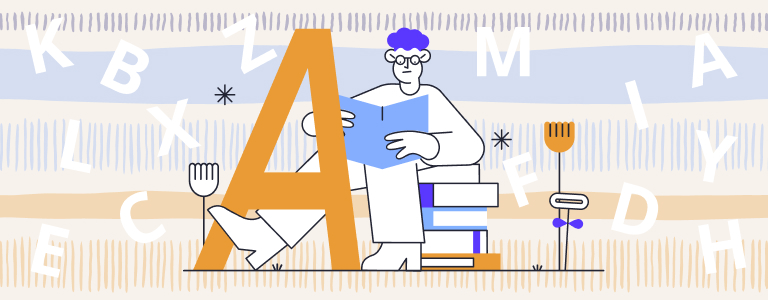Resources to Support Students With Dyslexia

Dyslexia is a condition that affects how a person processes words and numbers, which can also impact how they learn. Many people with dyslexia are not diagnosed until several years into their schooling or even into adulthood. In order for children with dyslexia to get the tools and assistance they need, it’s helpful for teachers and parents to understand dyslexia and how these children learn effectively.
What Is Dyslexia?
Dyslexia is a language-based learning disability that affects the ability to read, spell, write and speak. According to Nemours Kids Health, while many people think that having dyslexia results in people getting letters mixed up or backwards, the main challenge of dyslexia is difficulty recognizing phonemes, the basic sounds of speech (the “b” sound in “bat,” for example). People with dyslexia struggle to make the connection between the sound and the letter symbol for that sound.
Who Is Affected by Dyslexia?
Dyslexia affects 1 in 10 people, many of whom are not diagnosed and receive little or no intervention services, according to the International Dyslexia Association, Inc. (IDA). Undiagnosed dyslexia is “a hidden disability” that can result in difficulty navigating academic environments, underemployment and challenges in job settings, and lower self-confidence.
Most students who are diagnosed with dyslexia aren’t identified until at least third grade, according to Dr. Sally Shaywitz, co-director of the Yale Center for Dyslexia & Creativity, and author of Overcoming Dyslexia. In a 2017 APM Reports documentary, “Hard to Read: How American schools fail kids with dyslexia,” Shaywitz said it is not uncommon for people with dyslexia to go undiagnosed until adolescence or adulthood, “a systemic shortcoming that effectively abandons struggling young readers during the most critical years of learning.”
If you think you or your child may be dyslexic, you can take IDA’s test: Do I have dyslexia? Self-assessment tool
How Do Schools Address Dyslexia?
“Dyslexia is not due to either lack of intelligence or desire to learn; with appropriate teaching methods, students with dyslexia can learn successfully,” noted IDA. The problem is that in public school settings many teachers may not be knowledgeable about spotting or teaching students with this condition.
According to Kids Health, some signs of dyslexia that may show up in the classroom include:
- Poor reading skills
- Poor spelling and writing skills
- Difficulty finishing assignments and tests within time limits
- Trouble remembering the right names for things
- Struggles with memorizing written lists and phone numbers
Children with dyslexia who receive effective interventions as early as kindergarten and first grade have significantly fewer problems learning to read at grade level than children who are not identified or helped until third grade, the IDA reports. And this delay can have a major impact: 74 percent of the children who are poor readers in third grade remain poor readers in the ninth grade, and even into adulthood. That said, people with dyslexia can learn to read, process, and express themselves more efficiently as they grow older.
Parents who have children diagnosed with dyslexia may need to be proactive about seeking out specific methods of reading instruction and other resources to help their children learn effectively. According to Kids Health, a student with dyslexia usually needs to work with a specially trained teacher or reading specialist trained in specific learning and practice activities for dyslexia.
Some ways to help students with dyslexia include:
- Step-by-step instructions on the basics of reading, such as Structured Literacy: explicit, systematic teaching that focuses on phonological awareness, word recognition, phonics and decoding, spelling and syntax
- Allowing students different ways to show what they know, such as speaking rather than doing a written report
- Technology like audiobooks and text-to-speech to level the playing field

Mind Mapping
One way to support students with dyslexia is to teach them how to use “mind mapping.” This technique is a visual way of taking notes. It helps break down concepts, sketch out ideas and plan longer written assignments. It can reduce the number of words a child has to read and write to record and access information. Here’s how mind mapping works:
- Start by drawing an image in the center of a horizontal sheet of blank paper.
- Draw lines or “branches” radiating out from the central image, and label each with a few key words related to that idea or concept.
- Underneath those branches, add more branches labeled with subcategories of the main ideas.
- Work in a clockwise direction as you draw branches and sub-branches. It helps other people read your mind map.
- Order the branches by level of importance, using thick branches toward the center for concepts and thinner branches around the edges for details.
- Label each branch with one or two key words to distill main ideas, facts and connections. Rank the key words in order of importance, just like the branches.
Tips: Use space, colors and pictures, don’t write full sentences and don’t worry about keeping it neat.
Here’s a video that shows mind mapping in action.
Resources to Support Students
Dyslexia Articles and Fact Sheets for Parents and Teachers
- What is Dyslexia? DyslexiaHelp
- What is dyslexia? An interview with neuroscientist Guinevere Eden, APM Reports
- Understanding Dyslexia, Child Mind Institute
- Classroom accommodations for dyslexia, Understood
- Handbook: Dyslexia in the Classroom: What Every Teacher Needs to Know (PDF, 706 KB), International Dyslexia Association
- Effective Reading Instruction (includes downloadable PDF in English and Spanish), International Dyslexia Association
- Fact Sheets on dyslexia for use in IEP meetings, school board discussions, and advocacy initiatives (in English and Spanish), International Dyslexia Association
- Dyslexia in the Classroom, DyslexiaHelp
- Top Teaching Strategies for Students with Dyslexia, The Dyslexia Resource
- 15 Ways to Build Bridges with School Staff, DyslexiaHelp
- Hard to Read: How American schools fail kids with dyslexia, APM Reports
Resources for Students With Dyslexia
- Blast Off to Reading!: 50 Orton-Gillingham Based Lessons for Struggling Readers and Those with Dyslexia, by Cheryl Orlassino
- Orton Gillingham Workbook For Kids With Dyslexia, by BrainChild
- Writing Workbook for Kids with Dyslexia, by BrainChild
- Dyslexia Tools Workbook for Teens: 125 Exercises to Improve Reading Skills, by Jenn Clark and Gavin Reid
- Studying with Dyslexia, by Janet Godwin
Books About Dyslexia
- Dyslexia Advocate!: How to Advocate for a Child with Dyslexia within the Public Education System, by Kelli Sandman-Hurley
- Overcoming Dyslexia, Second Edition, by Sally Shaywitz, MD, and Jonathan Shaywitz, MD
- The Dyslexia Empowerment Plan: A Blueprint for Renewing Your Child’s Confidence and Love of Learning, by Ben Foss
- The Dyslexic Advantage: Unlocking the Hidden Potential of the Dyslexic Brain, by Brock L. Eide, MD, and Fernette F. Eide, MD
- The Gift of Dyslexia: Why Some of the Smartest People Can’t Read…and How They Can Learn, by Ronald D. Davis and Eldon M. Braun
Videos About Dyslexia
- CBS Sunday Morning: Dyslexia: Cracking the code
- Understood: Signs of Dyslexia at Different Ages
- Made By Dyslexia: Dyslexia awareness interviews and training videos featuring celebrities including Sir Richard Branson, Keira Knightley and Orlando Bloom joined by leading dyslexia experts.
- Dean Jackson: The 50-Minute Focus Finder, a technique recommended by DyslexiaHelp Featured Success Story: Ben Worthington.
- BulletMap Studios: Dear John (A Day in the Life of A Dyslexic Teenager), created by a father with dyslexia who founded BulletMap Academy, a company offering coaching courses and support as well as free resources and videos for parents.
Organizations for Parents and Teachers
- Dyslexic Advantage: One of the world’s largest online communities for dyslexia and a 501c3 charitable organization. Offers tools and courses for teachers and parents, a newsletter, paid membership option for premium access.
- The Dyslexia Center at Scottish Rite for Children: This hospital in Texas offers resources, workshops and training for therapists and educators working with children with dyslexia.
- Dyslexia Help at the University of Michigan: This website offers online resources for students, parents and teachers, including professional development resources on dyslexia for educators.
- Our Dyslexic Children: This nonprofit formed by parents in Ohio offers numerous resources including a free PDF workbook: A Strategic Roadmap for Dyslexia Parent Groups and the 2020 film, Our Dyslexic Children.
- Understood: A nonprofit founded 30 years ago to provide resources, expertise and community to families of kids who learn and think differently.
The following information is for informational purposes only. For more information on how to identify whether a child has dyslexia and how to support them, please reach out to a health care professional.
